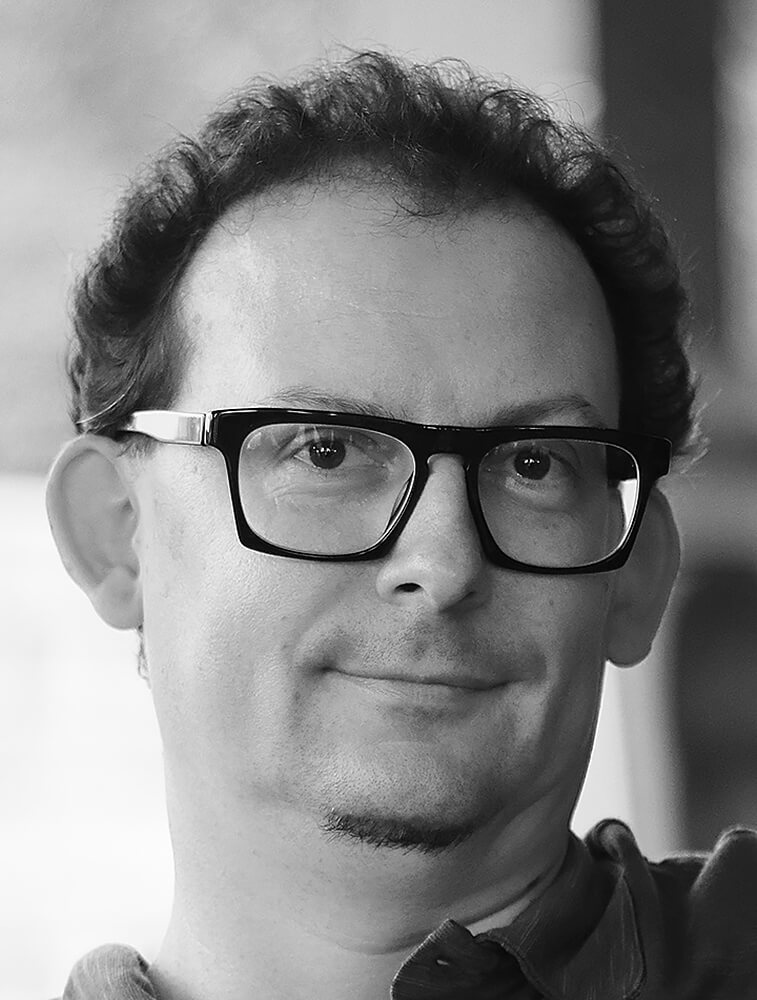Erberto Zani (Parma, Italy, 1978) is a journalist and documentary photographer who specializes in human rights issues.
Graduate at school of applied Arts Paolo Toschi in graphic design, after the studies in History of Art at University of Parma he worked as a photographer in advertisement sector (1998-2004). Journalist and photographer for the newspaper
Gazzetta di Parma (2004-2007) and editor in chief for some local magazines, he becomes freelance in 2008.
During these years he documented the destruction created by the earthquake in Haiti, the climate crises in Sahel, the Maha Kumbh Mela in India, the daily life inside the ship breaking yards in Bangladesh, the exodus of Rohingya from Myanmar, the refugee camps in Lebanon, Greece and Uganda, the effects of the war in Marawi city / Philippines.
Actually, Zani is working on two long term documentary projects, both around the world:
Dark World, about the illegal mineral's extraction, and
Survivors, about acid attack victims.
Awarded in several international contests, his images are published on several books and dozens of international magazines.
He lives in Basel, Switzerland.
Books
Urban Visions (ed. Blurb, 2021),
Elemental Fashion (ed. Blurb,2019), Exodus (ed. Blurb, 2018),
Kied Pologo (ed. Stamperia, 2017),
Aftermath (ed. Stamperia, 2016),
Black World (ed. Stamperia, 2015),
Maha Kumbh Mela (ed. Stamperia, 2014),
Tsiry (ed. Stamperia, 2014),
Babanagar-Colombia (ed. Stamperia, 2013),
Sahel (ed. Stamperia, 2012),
Hope (ed. Stamperia, 2011),
Haiti, fragments (ed. Stamperia, 2010),
Drops of Life (ed. Stamperia, 2010),
Da Borgo San Donnino al Passo della Cisa (ed. Publiprint, 2006).
Publications
WHO (World Health Organization),
UNESCO (United Nations Educational Scientific and Cultural Organization),
USAID (United States Agency for International Development),
AMURT Global Network,
John Hopkins Bloomberg School of Public Health,
Development Gateway,
Id21 (Institute of Development Studies University of Sussex),
Planeta Salud,
ICF Macro,
GTZ (Deutsche Gesellschaft für Technische Zusammenarbeit),
UNIPID (Finnish University Partnership for International Development),
March (Maternal Reproductive & Child Health),
The Appalachian Voice,
AIP (Journal of Chemical Physics),
Gazzetta di Parma,
L'Informazione di Parma,
Diario,
Africa,
Nigrizia,
Popoli,
Redattore Sociale,
Repubblica.it,
Treatment Action Campaign,
CORE Group,
Solidarietà e Cooperazione CIPSI,
Witness Journal,
Tsiry Parma Onlus,
E gli Altri? Onlus,
Solidarietà Muungano Onlus,
Dodho Magazine,
Phosmag,
Terra Nuova,
L'Espresso,
Rex Shutterstock agency,
Associated Press agency,
Fotodom agency,
Sipa agency,
Scanpix agency,
Puzzlepix agency,
Le Journal du Dimanche,
DeStandaard,
Enough Project,
Life Force Magazine,
LesEchos.fr,
vdi-nachtrichten.com,
20 minutes.fr,
stimmenafrikas.de,
wisdom wander.pl,
Loveless,
Illume Oy,
Global Witness,
QCode magazine,
Street Art United States,
Art Works Projects,
Libéma Fun Factory,
TheJournal.ie,
MSN.com,
Fotopolis.com,
Mymodernmet.com,
Traveller24.com,
The Telegraph,
Metro.se,
All About Photo,
Click Magazine,
Musagetes Foundation,
Vogue Italia,
Alamy.com,
DeAbyDay,
Rai3 Tg3 Mondo,
FotoNostrum,
Camilo Egas Museum - MuNa,
DocuMagazine,
Korper magazine.
Awards
All About Photo:
2nd place Portrait, 2021
Art Limited: 3rd place in Reportage & Press Awards, 2021
Umbra International Photography Awards: Main category "People" winner, 2020
Smithsonian Photo Contest: Finalist, 2020
Art Limited Awards: 1st place in Reportage & Press Awards 2019
Chromatic Photography Awards: 1st place in Wildlife / Animal and 2nd place in Portrait, 2019
PX3 - Prix de la Photographie Paris: 1st place in Advertising / Book cover and 1st place in Book / People categories, 2019
Moscow Photography Awards: Gold medal in "Book / People" category , 2018
Monochrome Photography Awards: 1st and 2nd place, category "Photojournalism", 2017
IPA - International Photography Awards: 2nd place, category Book Documentary, 2016
PX3 - Prix de la Photographie Paris: Gold medal in Professional Book Documentary and Bronze medal in Professional Book People category, 2016
Exhibitions
2021 Town Hall, Möhlin, Switzerland (30/04 - 30/06)
2020 Museo Camilo Egas - MuNa, Quito, Ecuador, 16/10 - 05/12
2019 MIPA - Malta International Photo Award exhibition, Malta Postal Museum 16/02 - 16/03 (Valletta, Malta)
2018 ImagOrbetello Festival, Sale di Piazza del Popolo, 25/08 - 08/09 Orbetello (Italy),
2018 PX3 - Paris Photography Prize winner’s exhibition at the Espace Beaurepaire (Paris, 10-14 July)
2017 ImagOrbetello Festival, Sala Imago, Piazza del Popolo, Orbetello (Italy)
2017 "Black World" book at Image Text Ithaca Symposium, Ithaca College Campus (June 30th)
2017 "Black World" book at Reading room at MAGNUM Foundation, New York City (June 17th)
2017 "Black World" book at Carnegie Museum of Art, PGH Photo Fair, Pittsburgh (29-30 April)
2016 Photo "Finding coltan" for permanent collection at The Design Museum, Londo, UK
2014 IPA Best of Show, Thonglor - Roof top gallery, Bangkok, Thailand
2009 "Sguardi a Sud-Est", Sorbolo (PR, Italy) Centro Civico
2007 "Sguardi a Sud-Est", Fidenza (PR, Italy) Palazzo Orsoline.
